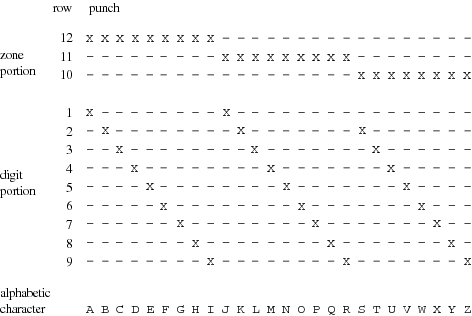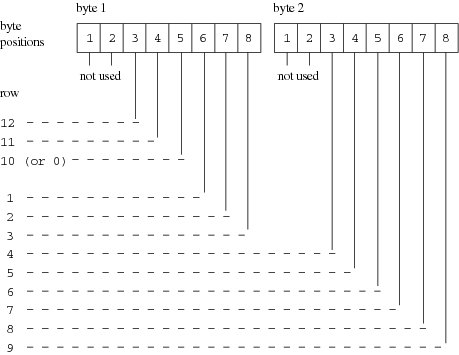Reading Column-Binary Data
Definition
is an older form of
data storage that is no longer widely used and is not needed by most
SAS users. Column-binary data storage compresses data so that more
than 80 items of data can be stored on a single “virtual”
punched card. The advantage is that this method enables you to store
more data in the same amount of space. Because card-image data sets
remain in existence, SAS provides informats for reading column-binary
data. See
Description of Column-Binary Data Storage for a more detailed explanation of column-binary data
storage.
How to Read Column-Binary Data
To read column-binary
data, you must set two options in the INFILE statement:
For example, to read column-binary data from a file,
use an INFILE statement in the following form before the INPUT statement
that reads the data:
infile file-specification or path-name
recfm=f
lrecl=160;Note: The expansion of each column
of column-binary data into two bytes does not affect the position
of the column pointer. You use the absolute column pointer control
@, as usual, because the informats automatically compute the true
location on the doubled record. If a value is in column 23, use the
pointer control @23 to move the pointer there.
Description of Column-Binary Data Storage
The arrangement
and numbering of rows in a column on physical punched cards originated
with the Hollerith system of encoding characters and numbers. It was
based on using a pair of values to represent either a character or
a numeric digit. In the Hollerith system, each column on a card had
a maximum of two punches, one punch in the zone portion, and one in
the digit portion. These punches corresponded to a pair of values,
and each pair of values corresponded to a specific alphabetic character
or sign and numeric digit.
In the zone portion
of the punched card, which is the first three rows, the zone component
of the pair can have the values 12, 11, 0 (or 10), or not punched.
In the digit portion of the card (the fourth through the twelfth rows),
the digit component of the pair can have the values 1 through 9, or
not punched.
SAS stores each column
of column-binary data (a “virtual” punched card) in
two bytes. Since each column has only 12 positions and since 2 bytes
contain 16 positions, the 4 extra positions within the bytes are located
at the beginning of each byte. The following figure shows the correspondence
between the rows of “virtual” punched card data and
the positions within 2 bytes that SAS uses to store them. SAS stores
a punched position as a binary 1 bit and an unpunched position as
a binary 0 bit.

